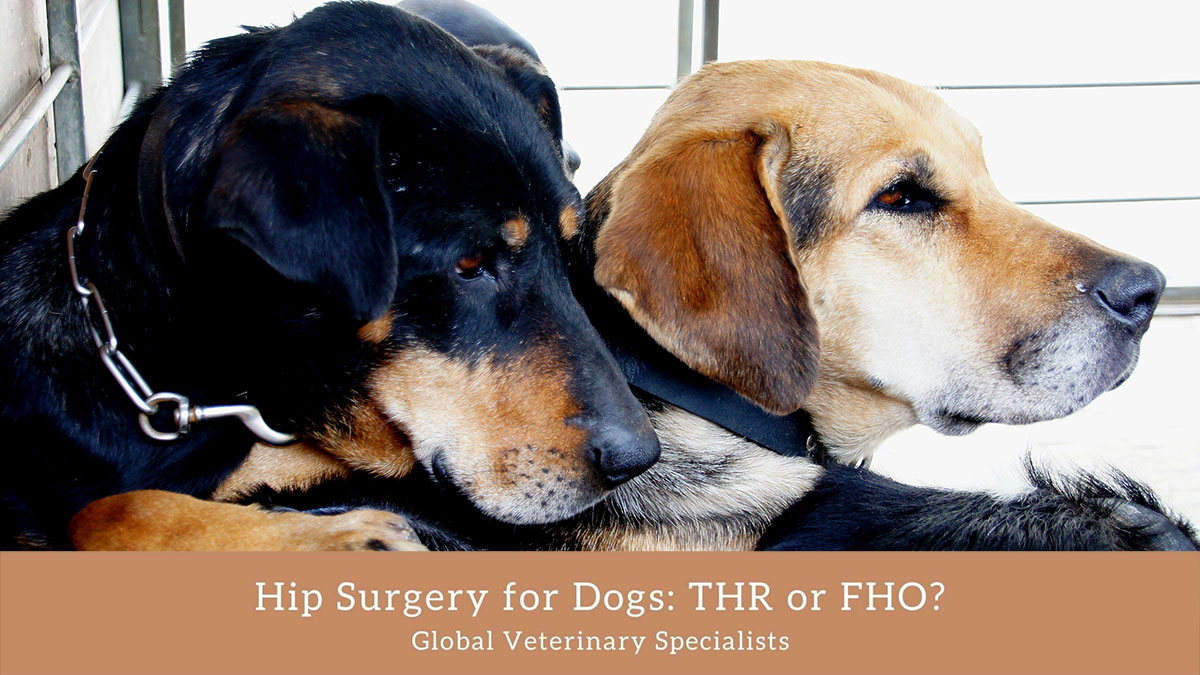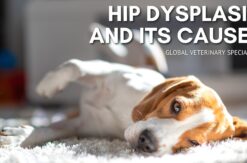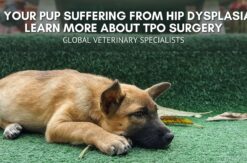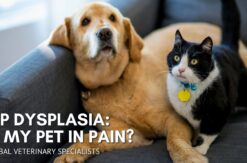Treatment options range from conservative medical pain management to surgical intervention. Of the latter, options for hip surgery for dogs diagnosed with hip dysplasia include Total Hip Replacement (THR) and Femoral Head Ostectomy (FHO), which we discuss below. It is best to speak with your veterinary surgeon about all available options before making a decision.
Total Hip Replacement (THR)
Total hip replacement (THR) can be used in dogs and cats of any size with moderate to severe hip dysplasia once skeletal maturity has been reached, usually between nine and twelve months of age. This procedure’s timing is made individually and only after a comprehensive orthopedic exam with radiographs.
THR is considered the gold standard surgical option, as it effectively and permanently eliminates pain, restoring the hip joint’s normal function.
This procedure involves replacing the ball and socket with titanium, cobalt, and ultra-high molecular weight polyethylene implants. These implantations are cemented in small dogs, usually weighing less than 25 pounds, and cementless in medium and large canines. You can find more specific information regarding the implants by clicking here.
Femoral Head Ostectomy (FHO)
Another option is a femoral head ostectomy (FHO). This hip surgery for dogs can be performed at any age to reduce discomfort, although the pain relief is often unpredictable, and rehabilitation time is prolonged. According to the American College of Veterinary Surgeons, it is performed on dogs weighing less than 70 pounds.
Because the ball is removed in this procedure, significant restraints on the dog’s activity and weight are required to prevent complications. Additional disadvantages also exist. A veterinary surgeon’s primary surgical recommendation is a total hip replacement to eliminate hip pain and a return to normal function.
Schedule an Appointment Today
Global Veterinary Specialists recognize that dogs and cats encounter orthopedic injuries, disabling difficulties, and diseases that can affect their quality of life. Each GVS surgeon has more than twenty years of experience treating complex problems that may arise in your pets.
We are teachers, mentors, inventors, clinical researchers, and surgeons driven to achieve excellence for every animal. Please contact us today to learn how we help restore your pet’s quality of life.
Resources:
“Canine Hip Dysplasia: Treatment.” The American College of Veterinary Surgeons.
“Femoral Head Ostectomy.” Global Veterinary Specialists.
“What is Hip Dysplasia?” Global Veterinary Specialists.



